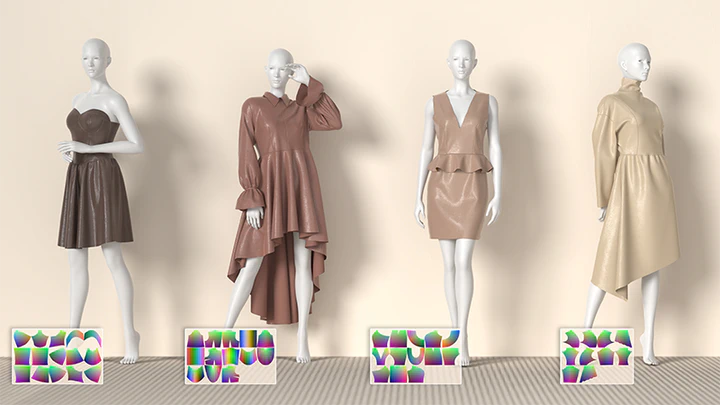GarmageNet: A Multimodal Generative Framework for Sewing Pattern Design and Generic Garment Modeling
Dec 2, 2025·,,,,,, ·
0 min read
·
0 min read
Siran Li
Ruiyang Liu
Chen Liu
Zhendong Wang
Gaofeng He
Yong-Lu Li
Xiaogang Jin
Huamin Wang

Abstract
Realistic digital garment modeling remains a labor-intensive task due to the intricate process of translating 2D sewing patterns into high-fidelity, simulation-ready 3D garments. We introduce GarmageNet, a unified generative framework that automates the creation of 2D sewing patterns, the construction of sewing relationships, and the synthesis of 3D garment initializations compatible with physics-based simulation. Central to our approach is Garmage, a novel garment representation that encodes each panel as a structured geometry image, effectively bridging the semantic and geometric gap between 2D structural patterns and 3D garment geometries. Followed by GarmageNet, a latent diffusion transformer to synthesize panel-wise geometry images and GarmageJigsaw, a neural module for predicting point-to-point sewing connections along panel contours. To support training and evaluation, we build GarmageSet, a large-scale dataset comprising 14,801 professionally designed garments with detailed structural and style annotations. Our method demonstrates versatility and efficacy across multiple application scenarios, including scalable garment generation from multi-modal design concepts (text prompts, sketches, photographs), automatic modeling from raw flat sewing patterns, pattern recovery from unstructured point clouds, and progressive garment editing using conventional instructions, laying the foundation for fully automated, production-ready pipelines in digital fashion. Refer to our project page for open-sourced code and dataset.
Type
Publication
ACM Trans. Graph. (SIGGRAPH Asia), 44(6)